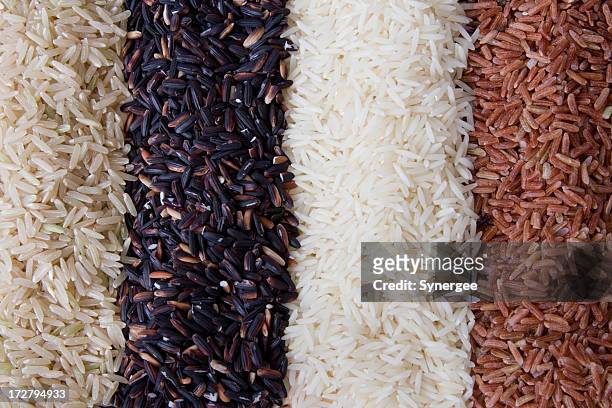How many varieties of Basmati Rice are grown in india? : Basmati rice, the long-grained aromatic jewel of India, is cherished for its exquisite taste and unique fragrance. But how many varieties of this prized grain grace Indian fields? While estimates often float around the thousands, the official number of documented Basmati rice varieties currently stands at 43, as per the All India Rice Exporters’ Association (AIREA).

This figure might seem modest compared to the staggering diversity of rice varieties in India, estimated to be around 50,000. However, it’s crucial to understand that not all rice qualifies as Basmati. This title is reserved for specific long-grained varieties possessing distinct quality characteristics, including:
- Elongation upon cooking: True Basmati rice grains increase in length by at least 20% when cooked.
- Unique aroma: The characteristic Basmati fragrance comes from the presence of 2-acetyl-1-pyrroline, a volatile compound not found in other rice varieties.
- Exquisite taste: Basmati is known for its delicate flavour and nutty undertones.
- The 43 documented Basmati varieties are further classified into categories based on grain characteristics, aroma, and geographical origin. Some popular examples include:
- Dehraduni Basmati: Renowned for its extra-long grains and delicate aroma.
- Pusa Basmati 1121: A widely cultivated variety known for its good yield and consistent quality.
- Kasturi Basmati: Prized for its strong, musky aroma and slightly thicker grains.
- Haryana Basmati 1: Known for its early maturity and resistance to diseases.
- While 43 documented varieties might seem like a limited selection, it’s important to remember that these are the officially recognized and protected Basmati strains. Additionally, research and development efforts are constantly underway to improve existing varieties and develop new ones with enhanced characteristics.
Understanding the diverse landscape of Basmati rice is crucial for various stakeholders. Farmers benefit from information on high-yielding and disease-resistant varieties. Consumers gain awareness about the authenticity of the Basmati they purchase. And policymakers can ensure proper protection and promotion of this valuable agricultural heritage.

Types of Basmati Rice in India with price
- Here are the list:
- Basmati Bonanza: A Guide to Types and Prices
- India’s beloved Basmati rice boasts 43 recognized varieties, each offering unique flavors and aromas. But navigating this fragrant world can be tricky. Here’s a quick breakdown of popular types and their approximate prices (per kg):
- Dehraduni Basmati: Extra-long grains, delicate aroma. ₹120-₹180.
- Pusa Basmati 1121: Consistent quality, good yield. ₹80-₹120.
- India Gate Rozana: Budget-friendly option. ₹60-₹80.
- For the Special Occasion:
- Kasturi Basmati: Strong, musky aroma, thicker grains. ₹200-₹250.
- Haryana Basmati 1: Early maturity, disease resistant. ₹150-₹200.
- Daawat Traditional: Rich flavor, perfect for Biryani. ₹180-₹220.
- Remember: Prices vary depending on brand, quality, and location. Explore local markets and online retailers for the best deals!
So, the next time you savor a plate of fluffy, aromatic Basmati rice, remember – it’s not just a single grain, but a diverse tapestry of flavors and aromas waiting to be explored.
Goto Homepage https://news24journel.com
